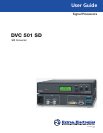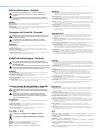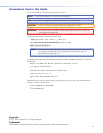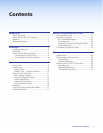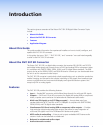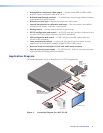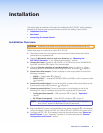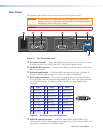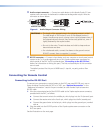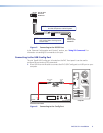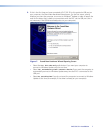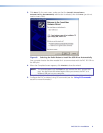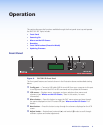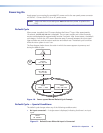
DVC 501 SD • Introduction 1
Introduction
This section gives an overview of the Extron DVC 501 SD Digital Video Converter. Topics
include:
• About this Guide
• About the DVC 501 SD Converter
• Features
• Application Diagram
About this Guide
This guide provides information for experienced installers on how to install, configure, and
operate the DVC 501 SD converter.
In this guide, the terms “DVC,” “DVC 501 SD,” and “converter” are used interchangeably
to refer to the DVC 501 SD converter.
About the DVC 501 SD Converter
The Extron DVC 501 SD is a digital video converter that receives SDI, HD-SDI, and 3G-SDI
serial digital video signals and converts them to DVI-D and analog RGB or component video.
It is compliant with SMPTE 259M, 292M, 424M, and ITU digital video standards. The RGB
output can be set for RGBHV, RGBS, and RGsB. Bi-level or tri-level sync can be selected when
the unit is set for component video output.
The DVC 501 SD converter is particularly suited to applications such as television production,
medical imaging, and live events that require interfacing of SDI signals from broadcast-type
sources to professional and consumer-level displays and signal distribution systems that
accept only DVI or analog signals.
Features
The DVC 501 SD provides the following features:
• Input — Female BNC connector with buffered loop-through for multi-rate SDI signals
• Outputs — DVI-D and 15-pin HD connectors for digital and analog RGB or component
video; a captive screw connector for balanced and unbalanced stereo audio
• Multi-rate SDI signals up to 2.97 Gbps accepted — Accepts data rates from
standard definition NTSC and PAL to HDTV 1080p/60. It complies with SMPTE 259M,
292M, 424M, and ITU digital video standards.
• Simultaneous DVI-D and analog RGB or component video outputs — Provides
high resolution digital and analog video outputs that allow for easy integration of
multi-rate SDI signals into DVI or RGB-based AV devices and systems.
• AES3 audio de-embedding — Extracts and outputs embedded AES3 stereo audio
streams. Audio can be balanced or unbalanced.
• Balanced or unbalanced audio output
• Audio attenuation control



